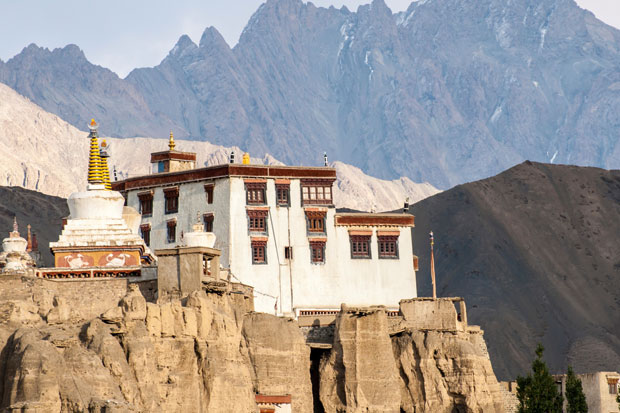As the aircraft descends into the high altitude military airport at Leh, the first glimpse of the Himalayan Kingdom of Ladakh is nothing short of awe-inspiring. Situated on an 11,500ft high desert plateau, and sometimes known as ‘Little Tibet’, Ladakh has remained immune from the Chinese and Kashmiri territorial conflict. It maintains one of the most intact Tantric Buddhist societies left on earth. A journey through this stunning kingdom should be on every serious traveller’s list and it is now possible to stay in a series of fully staffed private houses dotted across the Indus valley.
Ladakh reached the pinnacle of its power in the mid-17th century under King Sengge Namgyal (‘Victorious Lion’) when the kingdom stretched from Skardu (now in Pakistan-administered Kashmir) to the border of Tibet. Although plundering raids by Muslims from Central Asia had weakened the state in the 16th century, the king set about restoring its power by rebuilding numerous gompas and shrines, the most famous being the monastery at Hemis. Under his son Delegs Namgyal’s rule, the kingdom crumbled and the king himself was forced to become a Muslim in return for accepting support from the Mughal army.
My own journey commenced with an introduction to religious life at Likhir Monastery, established in 1065 and currently inhabited by 120 monks of the Gelugpa sect of Tibetan Buddhism. From there, it was a gentle walk down the valley for two and a half hours before we arrived at an apricot orchard, where a sumptuous picnic lunch had been set up in the shade of an old tree. Later on at Alchi monastery, the red-robed novice monks provided additional entertainment by inventing a game which involved hurling a yellow balloon across a small courtyard… until they were chastised by an angry abbot.








Comments
Join the debate for just £1 a month
Be part of the conversation with other Spectator readers by getting your first three months for £3.
UNLOCK ACCESS Just £1 a monthAlready a subscriber? Log in